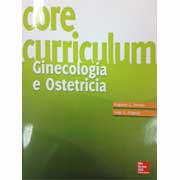249. Extending the platinum-free interval with a non-platinum therapy in platinum-sensitive recurrent ovarian cancer. Results from the SOCRATES Retrospective Study
Pignata S, Ferrandina G, Scarfone G, Scollo P, Odicino F, Selvaggi L, Katsaros D, Frigerio L, Mereu L, Ghezzi F, Manzione L, Lauria R, Breda E, Marforio G, Magni G, Ballardini M, Lombardi AV, Sorio R, Tumolo S, Costa B, Perrone F, Favalli G; Oncology. 2006;71(5-6):309-11.
BACKGROUND: It has been proposed that extending the platinum-free interval with intervening non-platinum therapy increases the efficacy of a later re-treatment with platinum in platinum-sensitive recurrent ovarian cancer. This hypothesis is based on data from small series and although it has not been validated prospectively, this strategy has entered general practice in Italy in the last years. The SOCRATES study retrospectively assessed the pattern of care of a cohort of patients with recurrent platinum-sensitive ovarian cancer observed in the years 2000-2002 in 37 Italian centres. Data were collected between April and September 2005. METHODS: Patients with recurrent ovarian cancer with a platinum-free interval >6 months were eligible. 493 patient files were collected and 428 were eligible and analyzed. RESULTS: The interval from the end of the 1st line to relapse was 6-12 months in 164 patients (39.5%) and >12 months in 251 cases (60.5%). Patients received a 2nd (100%), 3rd (80.1%), 4th (50.2%), 5th (28.3%), and 6th (11.9%) line of chemotherapy. At 2nd line 282 (65.9%) received platinum (group A), while 146 (34.1%) received non-platinum chemotherapy (group B). In the latter group, 67 patients received platinum at later progression (group B1), while 79 never received platinum (group B2). Median time to platinum re-treatment was 20 and 23.1 months in patients of groups A and B1, respectively. The response rate to the first platinum received was 74.4 and 57.4% in groups A and B1, respectively (p = 0.02). Group B2 was characterized by the worst response rate and survival. At multivariate analysis time of first platinum re-treatment (2nd line vs. later; p = 0.0132; OR = 2.34) and age (p = 0.0029; OR = 2.41) was independently associated with a higher possibility of response to platinum. CONCLUSIONS: With the limits of a retrospective study, our data question the hypothesis that extending the platinum-free interval with an intervening non-platinum therapy in patients with recurrent platinum-sensitive ovarian cancer improves the response rate of a further platinum re-treatment.
